1 of 13
Download to read offline
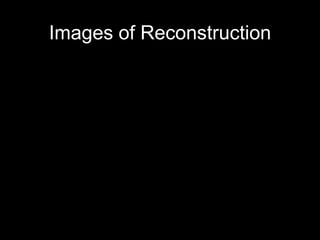
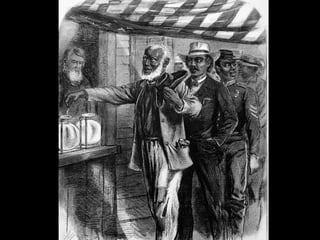
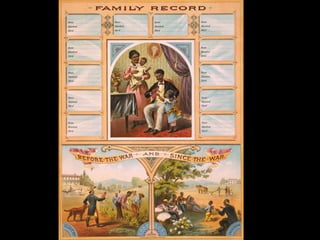

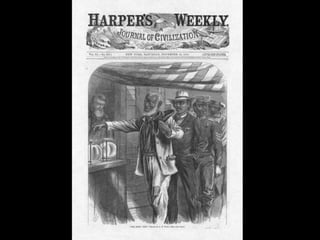
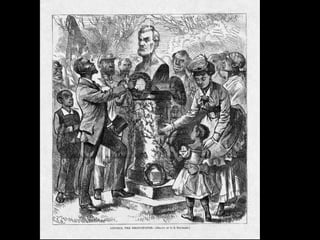
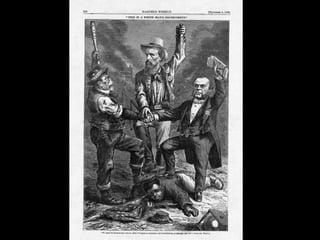

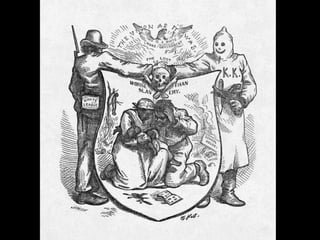
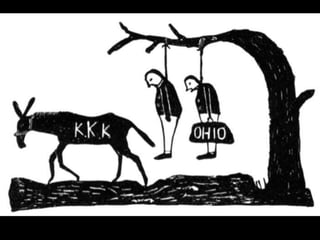

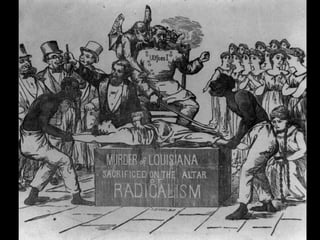
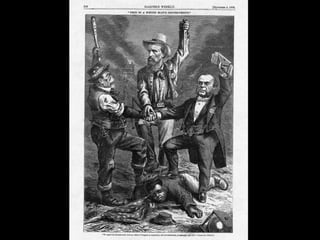
Ad
Recommended
Walk in the shoe of angular
Walk in the shoe of angularFiyaz Hasan
╠²
This document provides an overview of Angular, including what it is, why it is useful, its key features, and how to get started using it. Angular is a client-side framework written in JavaScript that makes it easy to build dynamic web applications. It provides features like separation of concerns, Ajax services, dependency injection, and browser history out of the box. The document demonstrates how to set up an Angular application and introduces concepts like views, directives, data binding, controllers, scopes, modules, and providers to help structure applications. It also covers validation and animation in Angular.Planning
PlanningDattatreya Reddy Peram
╠²
- Planning involves looking ahead and determining future courses of action. It establishes what needs to be done, how it will be done, and who will do it.
- Planning bridges the gap between the present and where the organization wants to go in the future. It makes things happen that otherwise would not.
- Some key characteristics of planning include that it is goal-oriented, involves looking ahead and preparation for the future, requires intellectual and analytical thought, involves decision making among alternatives, and is a continuous process as plans need regular review.Layout for shoes
Layout for shoesfredddddddd
╠²
This document appears to be an advertisement layout with images of people and slogans for a shoe brand. The layout includes images of people alternating with slogans to promote the shoe brand. The slogans and people images are organized in a repetitive pattern to showcase the shoe brand.Planning
Planningindira 7
╠²
The document outlines the concept of planning as a fundamental function of management, detailing various aspects such as setting objectives, market analysis, and organizational structure. It provides a specific example involving the Breeze Shoe Company, which utilizes innovative technology to enhance footwear performance and comfort while addressing consumer needs and market demands. Additionally, it covers financial and risk reduction strategies for the company, highlighting the importance of planning for business success.Supply Chain
Of
SHOE MANUFACTURING FIRM
Supply Chain
Of
SHOE MANUFACTURING FIRMniranjan nahak
╠²
The document summarizes the supply chain of a shoe manufacturing firm. It describes the key suppliers and distributors, production process, target markets, product features, and strategies for the firm. The supply chain involves procuring raw materials from leather and thread suppliers. Production involves cutting, sewing, fitting, and finishing. The target market is people with diabetes in Hyderabad. Features include lightweight and breathable shoes. The strategies discussed include buyer-supplier relationships, demand forecasting, and distribution through local retailers.Semester Final Review Jeopardy Ch. 8 - 13
Semester Final Review Jeopardy Ch. 8 - 13Peter Tragos
╠²
The document contains a quiz about topics related to early US history, including the Louisiana Purchase, Marbury v. Madison, and the Second Great Awakening. It includes multiple choice, fill-in-the-blank, short answer, and other question types on historical figures, events, laws, and court cases from the Jefferson through Jackson eras.Jeopardy chapters 8 13
Jeopardy chapters 8 13Peter Tragos
╠²
The document contains a quiz with questions about US history from the Louisiana Purchase to the Mexican-American War. It includes multiple choice, fill-in-the-blank, short answer and other question types with answers provided. The questions cover topics like Thomas Jefferson, John Marshall, War of 1812 justifications, Jacksonian democracy, the Nullification Crisis, the Second Great Awakening in the North and South, Manifest Destiny, James K. Polk and the Mexican Cession resulting from the Treaty of Guadalupe Hidalgo.Semester Final Review Jeopardy Ch.1 - 7
Semester Final Review Jeopardy Ch.1 - 7Peter Tragos
╠²
The document contains a quiz with questions in various categories ($100-$500) and point values. It asks about topics related to early American history, such as the encomienda system, John Winthrop, Bacon's Rebellion, the Navigation Acts, and the Whiskey Rebellion. The responses provide details to the multiple choice, fill-in-the-blank, short answer, and other questions.1920s wordsper6
1920s wordsper6Peter Tragos
╠²
The document discusses key themes and aspects of the 1920s decade in the United States, including industrialization and mass production leading to economic growth and consumerism, cultural standardization and uniformity, as well as themes of progress, innovation, opportunity, and idealism.King1963
King1963Peter Tragos
╠²
Martin Luther King Jr. traveled to Birmingham, Alabama in 1963 to protest against racial segregation and economic inequality, as the city had a reputation for violence against black citizens due to frequent bombings of black communities and homes by white supremacists, with no arrests made by the almost entirely white police force and city government that enforced Jim Crow laws separating public services by race.Parks king f bversion
Parks king f bversionPeter Tragos
╠²
Rosa Parks was arrested on December 1, 1955 for refusing to give up her seat to a white passenger on a segregated bus in Montgomery, Alabama. She was the secretary for the local NAACP chapter and had undergone civil rights training. E.D. Nixon, president of the NAACP, called lawyer Fred Gray to represent Parks and Gray contacted Jo Ann Robinson to plan a one-day boycott of the buses. Nixon also persuaded a young minister, Martin Luther King Jr., to support the boycott, and King was elected president of the new Montgomery Improvement Association to organize the boycott.Plus indianeducation
Plus indianeducationPeter Tragos
╠²
The document is a transcript of an online discussion about the positives of the Indian boarding school system. Participants suggest several potential positives: it allowed Native Americans to learn English and have opportunities for a better life; it was a step towards integrating them into American society; it provided education so they could fit in culturally in the future; and it gave them a chance to assimilate rather than be exterminated. Overall, the discussion focuses on how the boarding school system facilitated the assimilation of Native American children into mainstream American culture.Transcript Reconstruction Discussion 9
Transcript Reconstruction Discussion 9Peter Tragos
╠²
The discussion summarizes the goals and effectiveness of Reconstruction in the United States after the Civil War. Participants debated whether Reconstruction achieved racial equality or was primarily a political maneuver by Republicans to gain black votes. Enforcement Acts aimed to protect black civil rights were ineffective as the federal government lacked power in the South and the Ku Klux Klan intimidated blacks and Republicans. Ultimately, Reconstruction fell short of its aims due to lack of sustained commitment and white supremacist resistance in the South.Transcript Reconstruction Discussion 6
Transcript Reconstruction Discussion 6Peter Tragos
╠²
The document is a transcript of an online discussion about Reconstruction. Participants debate whether Reconstruction was a failure or success, with some arguing it established legal rights but societal racism prevented full equality, while others say it paved the way for future civil rights gains. They also discuss who was responsible for the end of Reconstruction and whether true equality has yet to be achieved.Thoreau at Walden Graphic Book
Thoreau at Walden Graphic Book Peter Tragos
╠²
This short document discusses a graphic version of Thoreau at Walden and asks if it illuminates something that was obscure in the original text. It also asks if the reader hears or sees McCandless, Whitman, or the Wanderer in the graphic version, and where they hear or see them.Thoreau at Walden Graphic Book
Thoreau at Walden Graphic Book Peter Tragos
╠²
This short document asks three questions about how a graphic version of a text might illuminate something that was obscure in the original text. It asks if the reader hears or sees the characters of McCandless, Whitman, or the Wanderer in the graphic version, and if so, where do they hear or see them.Landscape Fear & Glory
Landscape Fear & GloryPeter Tragos
╠²
The document discusses themes related to Romanticism such as freedom, escape from oppression, and dedication to beauty. It references Jack London, Alexander Supertramp, and Everett Ruess as examples of individuals who embraced romantic notions of being footloose and prioritizing aesthetics in their lives and work. Wallace Stegner is quoted reflecting on the allure of the open road and perceiving beauty in romantic terms through dedicated admiration for the natural world.American progresswanderer
American progresswandererPeter Tragos
╠²
The document is about the painting "American Progress" by John Gast from 1872. The painting depicts a female figure representing Columbia, and shows Native Americans moving out of Columbia's path as she brings arts, science, and industry across the American landscape. The document suggests asking questions about what values or characteristics are represented in the painting and what it says about American identity.More Related Content
More from Peter Tragos (10)
1920s wordsper6
1920s wordsper6Peter Tragos
╠²
The document discusses key themes and aspects of the 1920s decade in the United States, including industrialization and mass production leading to economic growth and consumerism, cultural standardization and uniformity, as well as themes of progress, innovation, opportunity, and idealism.King1963
King1963Peter Tragos
╠²
Martin Luther King Jr. traveled to Birmingham, Alabama in 1963 to protest against racial segregation and economic inequality, as the city had a reputation for violence against black citizens due to frequent bombings of black communities and homes by white supremacists, with no arrests made by the almost entirely white police force and city government that enforced Jim Crow laws separating public services by race.Parks king f bversion
Parks king f bversionPeter Tragos
╠²
Rosa Parks was arrested on December 1, 1955 for refusing to give up her seat to a white passenger on a segregated bus in Montgomery, Alabama. She was the secretary for the local NAACP chapter and had undergone civil rights training. E.D. Nixon, president of the NAACP, called lawyer Fred Gray to represent Parks and Gray contacted Jo Ann Robinson to plan a one-day boycott of the buses. Nixon also persuaded a young minister, Martin Luther King Jr., to support the boycott, and King was elected president of the new Montgomery Improvement Association to organize the boycott.Plus indianeducation
Plus indianeducationPeter Tragos
╠²
The document is a transcript of an online discussion about the positives of the Indian boarding school system. Participants suggest several potential positives: it allowed Native Americans to learn English and have opportunities for a better life; it was a step towards integrating them into American society; it provided education so they could fit in culturally in the future; and it gave them a chance to assimilate rather than be exterminated. Overall, the discussion focuses on how the boarding school system facilitated the assimilation of Native American children into mainstream American culture.Transcript Reconstruction Discussion 9
Transcript Reconstruction Discussion 9Peter Tragos
╠²
The discussion summarizes the goals and effectiveness of Reconstruction in the United States after the Civil War. Participants debated whether Reconstruction achieved racial equality or was primarily a political maneuver by Republicans to gain black votes. Enforcement Acts aimed to protect black civil rights were ineffective as the federal government lacked power in the South and the Ku Klux Klan intimidated blacks and Republicans. Ultimately, Reconstruction fell short of its aims due to lack of sustained commitment and white supremacist resistance in the South.Transcript Reconstruction Discussion 6
Transcript Reconstruction Discussion 6Peter Tragos
╠²
The document is a transcript of an online discussion about Reconstruction. Participants debate whether Reconstruction was a failure or success, with some arguing it established legal rights but societal racism prevented full equality, while others say it paved the way for future civil rights gains. They also discuss who was responsible for the end of Reconstruction and whether true equality has yet to be achieved.Thoreau at Walden Graphic Book
Thoreau at Walden Graphic Book Peter Tragos
╠²
This short document discusses a graphic version of Thoreau at Walden and asks if it illuminates something that was obscure in the original text. It also asks if the reader hears or sees McCandless, Whitman, or the Wanderer in the graphic version, and where they hear or see them.Thoreau at Walden Graphic Book
Thoreau at Walden Graphic Book Peter Tragos
╠²
This short document asks three questions about how a graphic version of a text might illuminate something that was obscure in the original text. It asks if the reader hears or sees the characters of McCandless, Whitman, or the Wanderer in the graphic version, and if so, where do they hear or see them.Landscape Fear & Glory
Landscape Fear & GloryPeter Tragos
╠²
The document discusses themes related to Romanticism such as freedom, escape from oppression, and dedication to beauty. It references Jack London, Alexander Supertramp, and Everett Ruess as examples of individuals who embraced romantic notions of being footloose and prioritizing aesthetics in their lives and work. Wallace Stegner is quoted reflecting on the allure of the open road and perceiving beauty in romantic terms through dedicated admiration for the natural world.American progresswanderer
American progresswandererPeter Tragos
╠²
The document is about the painting "American Progress" by John Gast from 1872. The painting depicts a female figure representing Columbia, and shows Native Americans moving out of Columbia's path as she brings arts, science, and industry across the American landscape. The document suggests asking questions about what values or characteristics are represented in the painting and what it says about American identity.